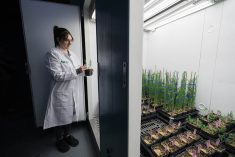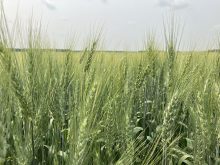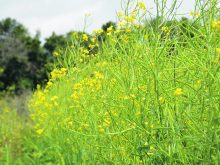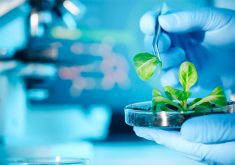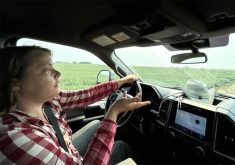Crops need sunlight for photosynthesis, but too much of a good thing can damage leaves and decrease their efficiency
Crops create food through the process of photosynthesis. But when leaves are exposed to full sunlight their green chlorophyll molecules can get more light energy than they may be able to handle. This can lead to damaged leaves costing the plant 10 to 30 percent of its ability to photosynthesize.
However, plants have developed a photoprotective mechanism to avoid this kind of damage called non-photochemical quenching (NPQ). The mechanism lets them release excess light energy as heat.
Researchers at the University of Illinois, Urbana-Champaign, and colleagues at the University of Cambridge in the United Kingdom have developed a fast way to analyze NPQ in field-grown plants and measure photosynthetic efficiency.
Read Also

Pakistan reopens its doors to Canadian canola
Pakistan reopens its doors to Canadian canola after a three-year hiatus.
“After decades of research, scientists had gained a good understanding of the basic processes of photosynthesis and were able to write equations to describe them,” said Steven Burgess, assistant professor of plant biology at the University of Illinois’ School of Integrative Biology. “These equations were used to run simulations on a computer where different inputs could be varied. This told us that, when leaves are moving in and out of the shade such as a soybean canopy or the understory of a tree, plants are slow to turn off photoprotection and therefore wasting energy.
“The prediction was validated in 2016 when researchers used genetic engineering to speed up the process of switching off photoprotection in tobacco plants and saw a substantial increase in photosynthetic efficiency and biomass production. What this paper looked at was the efficiency of turning off photoprotection when it is not needed.”
The study is part of the Realizing Increased Photosynthetic Efficiency (RIPE) international research project aimed at increasing global food production by improving photosynthesis. It is led by the University of Illinois at its Carl R. Woese Institute for Genomic Biology and is supported by the Bill and Melinda Gates Foundation, Foundation for Food & Agriculture Research, and the U.K. Foreign, Commonwealth & Development Office.
In the report, Burgess and his colleagues wrote that photosynthesis is not maximized in modern crop varieties, which sets up many of them for opportunities for improvement.
In 2021, soybeans were planted in the summer and leaf samples were collected for processing. The researchers measured NPQ chlorophyll fluorescence data in the lab.
“In order to look at NPQ relaxation we have to measure a plant using a camera that can detect fluorescent light, typically because plants are relatively large (in comparison to organisms such as bacteria),” said Burgess. “This means that most researchers are only able to measure one plant at a time and each measurement takes about an hour. What we did instead was to take a leaf punch (a one-centimetre diameter disk) as a proxy for a whole plant. Due to the reduced size, we were able to image about 200 leaf disks simultaneously, allowing us to screen many more plants than would otherwise be achievable.”
The team used a technique called pulse amplitude modulated (PAM) fluorescence analysis of chlorophyll-excited states to indirectly measure how much heat the plant is giving off at a given light intensity. He said that the method could be used to screen either plants genetically modified to increase efficiency or to see if there is a natural variation in the process among diverse varieties that potentially could be bred.
Burgess said in a news release that because conventional measurements are done on a per-plant basis, the use of the PAM procedure opens the potential to test hundreds of genotypes within a day and perform genome-wide association studies. The protocol is designed for analyzing field-grown soybeans but can be modified for sampling and measuring greenhouse-grown plants.
While his team has not had direct feedback from crop farmers, another area of the project has involved researchers working with breeders using similar approaches to improve photosynthetic efficiency of soybeans and cowpeas.
“By identifying major bottlenecks that hinder photosynthetic efficiency, we can figure out how to help plants grow more productively,” said Johannes Kromdijk, lecturer and head of the Environmental Plant Physiology Group at the University of Cambridge, who contributed to the study. “This approach involves faster ways to analyze data, and PAM chlorophyll fluorescence analysis is a powerful technique for measuring photosynthetic efficiency, providing us a means to measure many genotypes simultaneously.”
While many consequences of climate change are obvious, crop plants might be at greater danger due to too much light energy putting their ability to photosynthesize at risk, especially in times of water scarcity from drought or heat events. The consequence is food security being put at risk.
Research is continuing with extensive field testing of soybeans.
“There are a few avenues being studied by researchers at the University of Illinois,” he said. “The first is trying to introduce the genetic modification into the latest soybean cultivars and undertaking extensive field testing across the Midwest to see if the trait is widely beneficial, with an aim to commercial release. The second avenue is to introduce the trait into crops important for African agriculture such as cowpea and cassava.”
The research was published in the Journal of Visualized Experiments.



